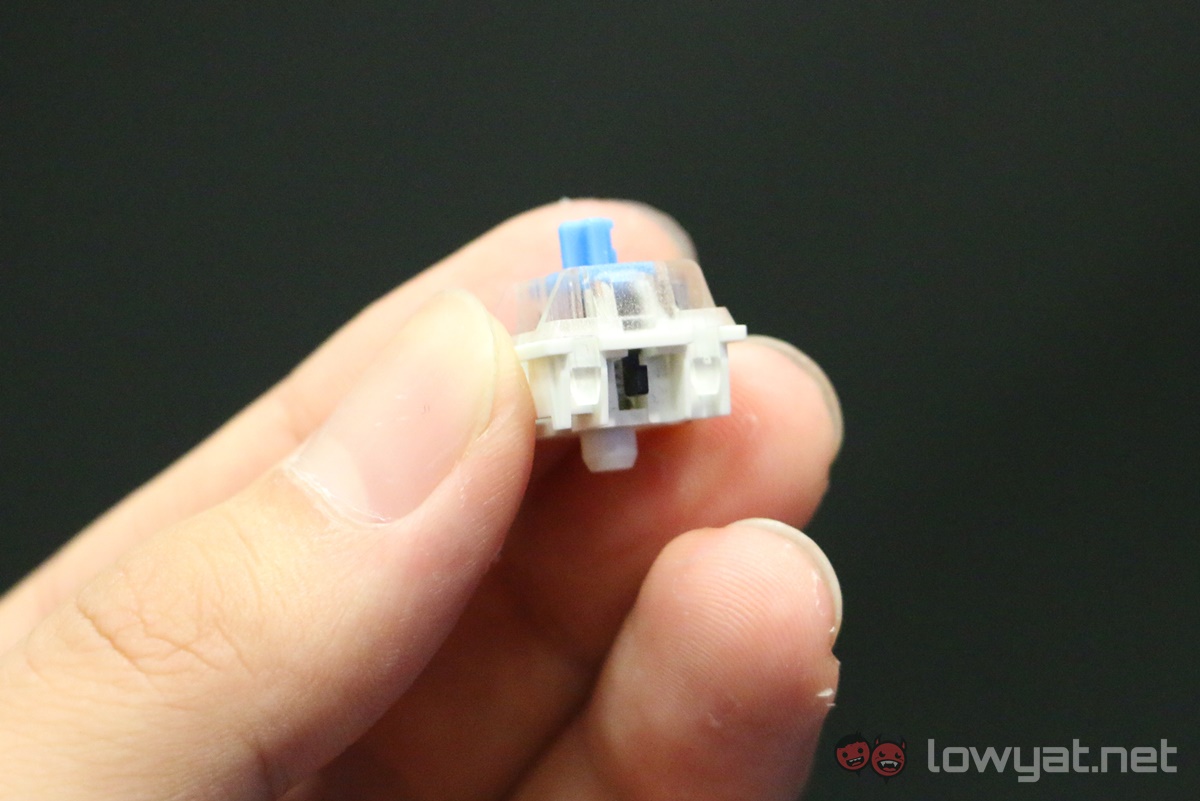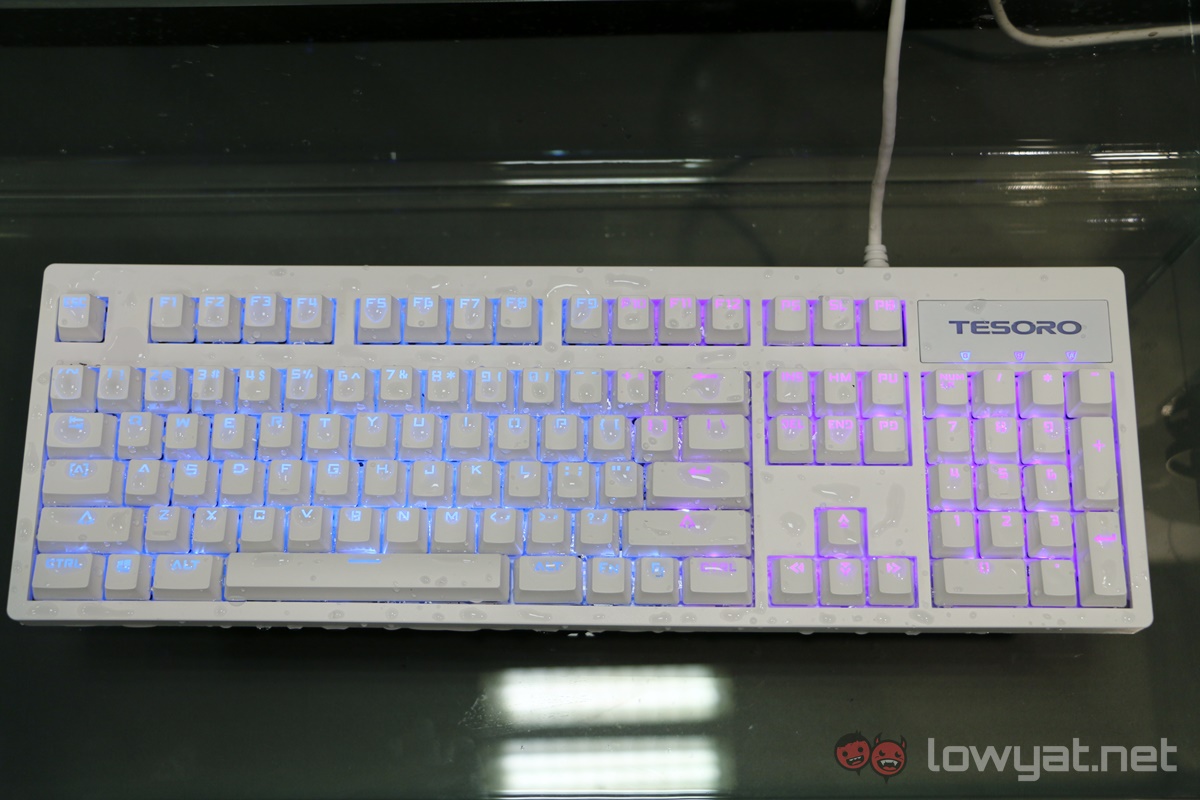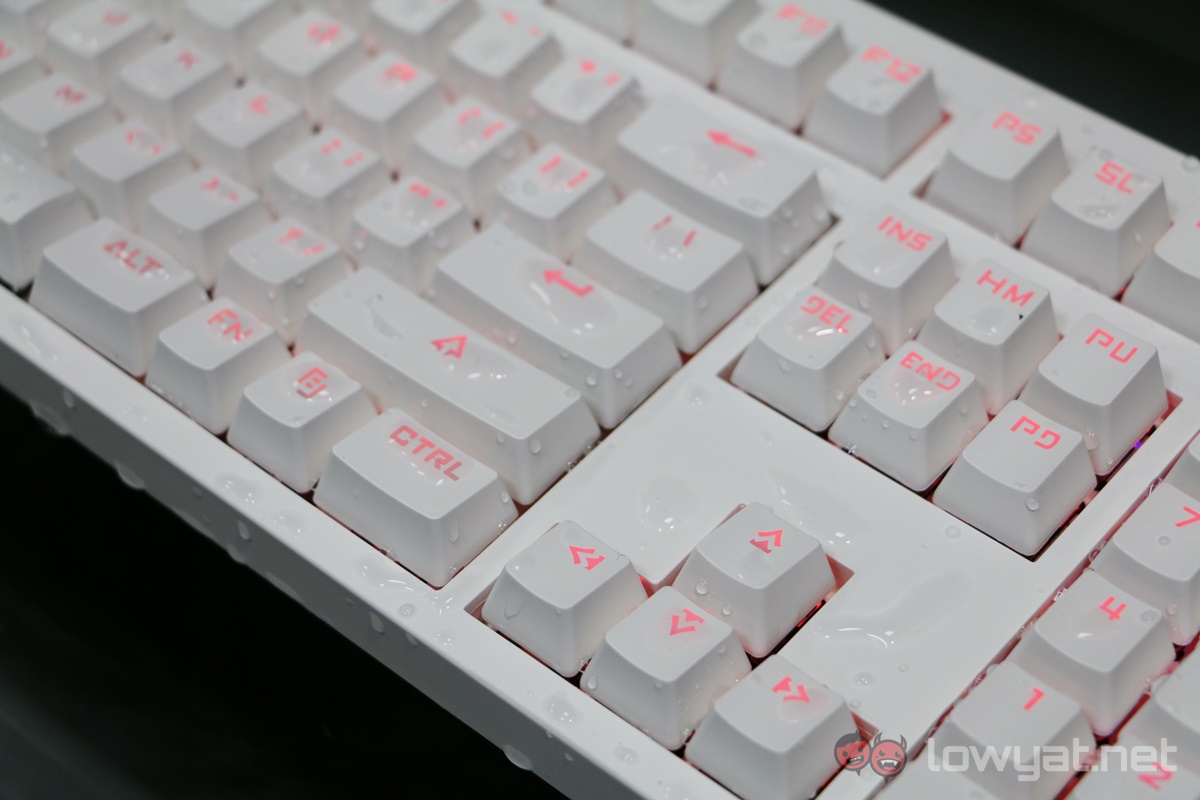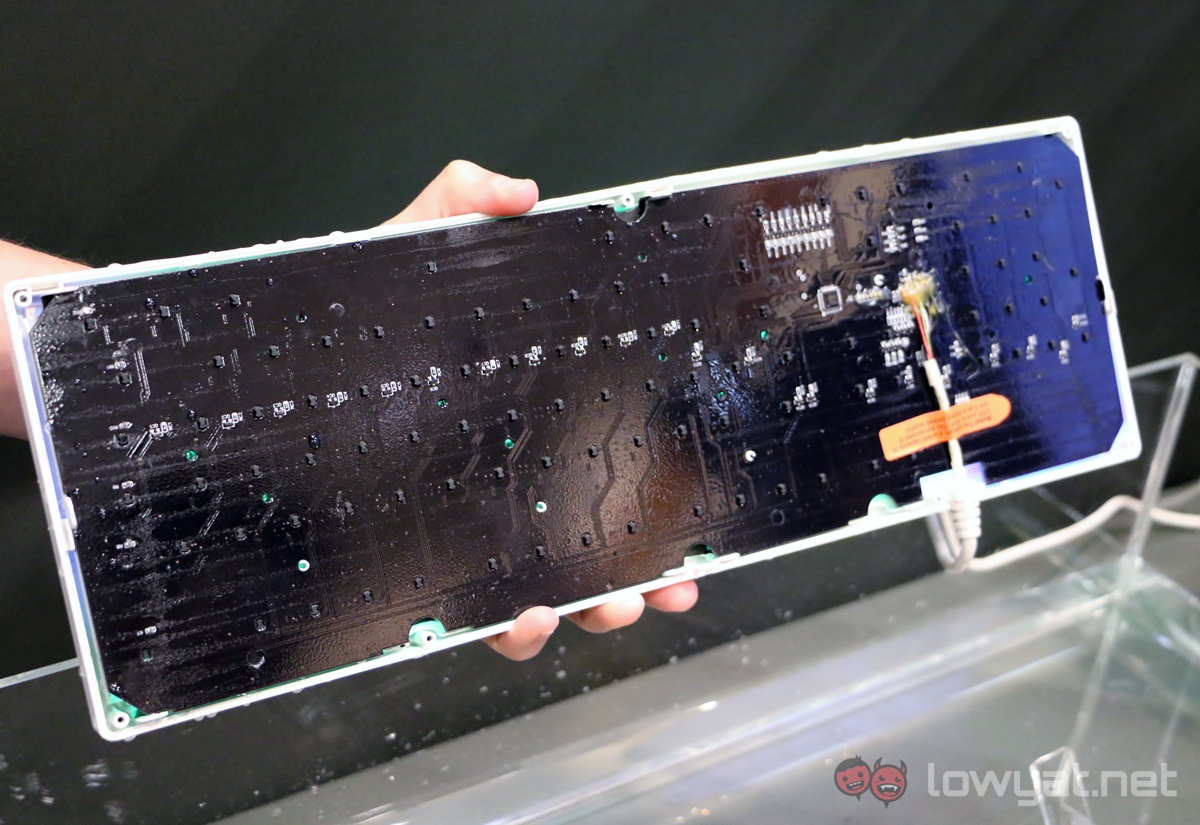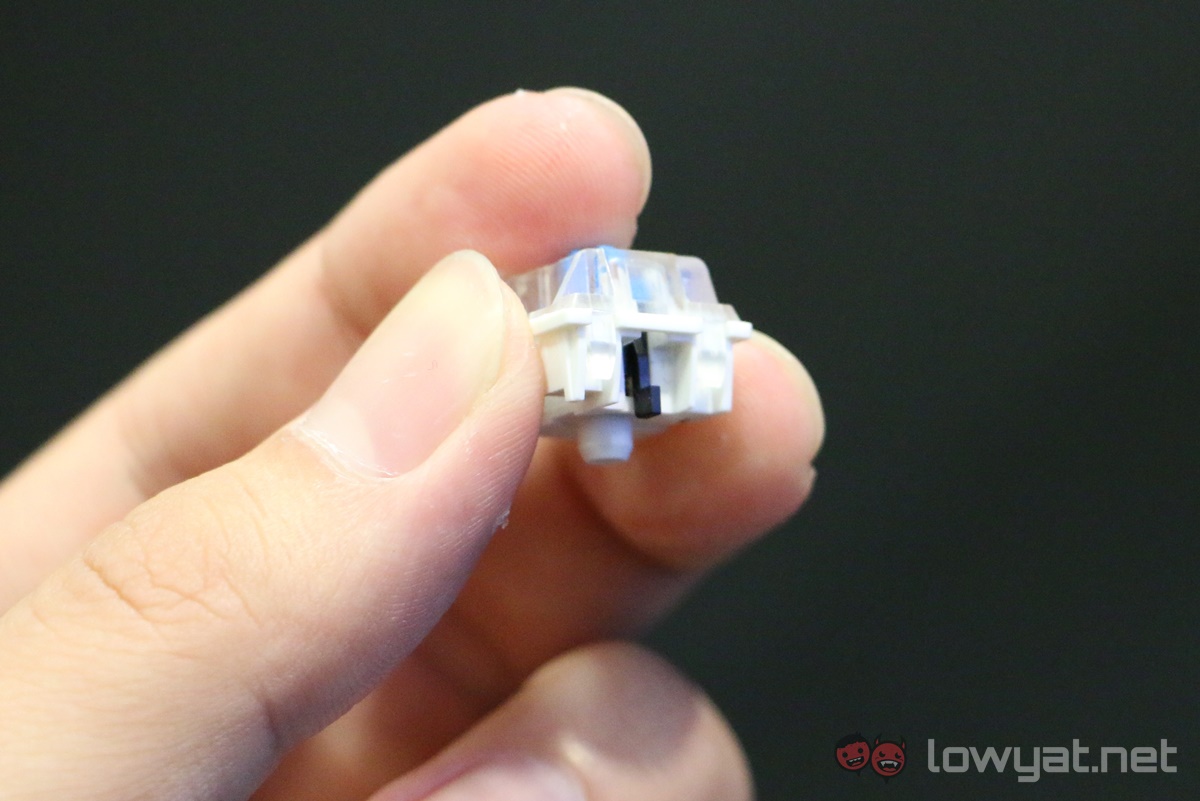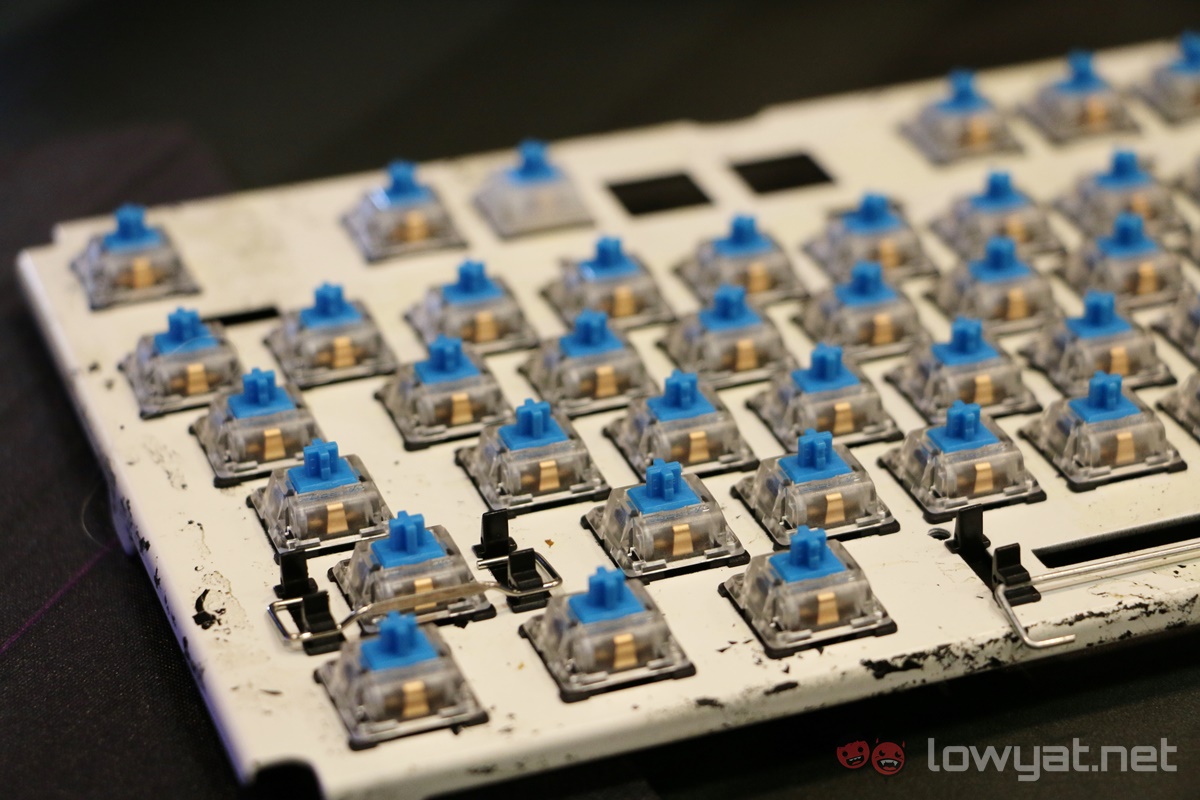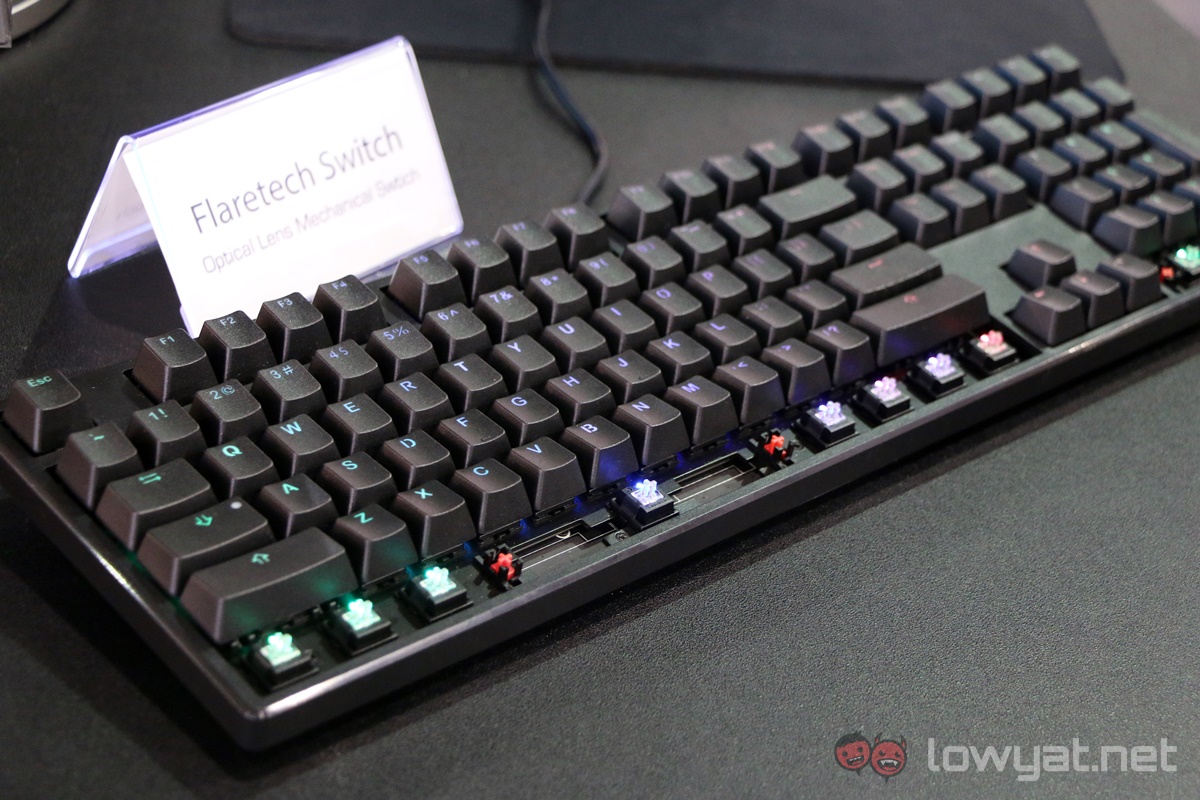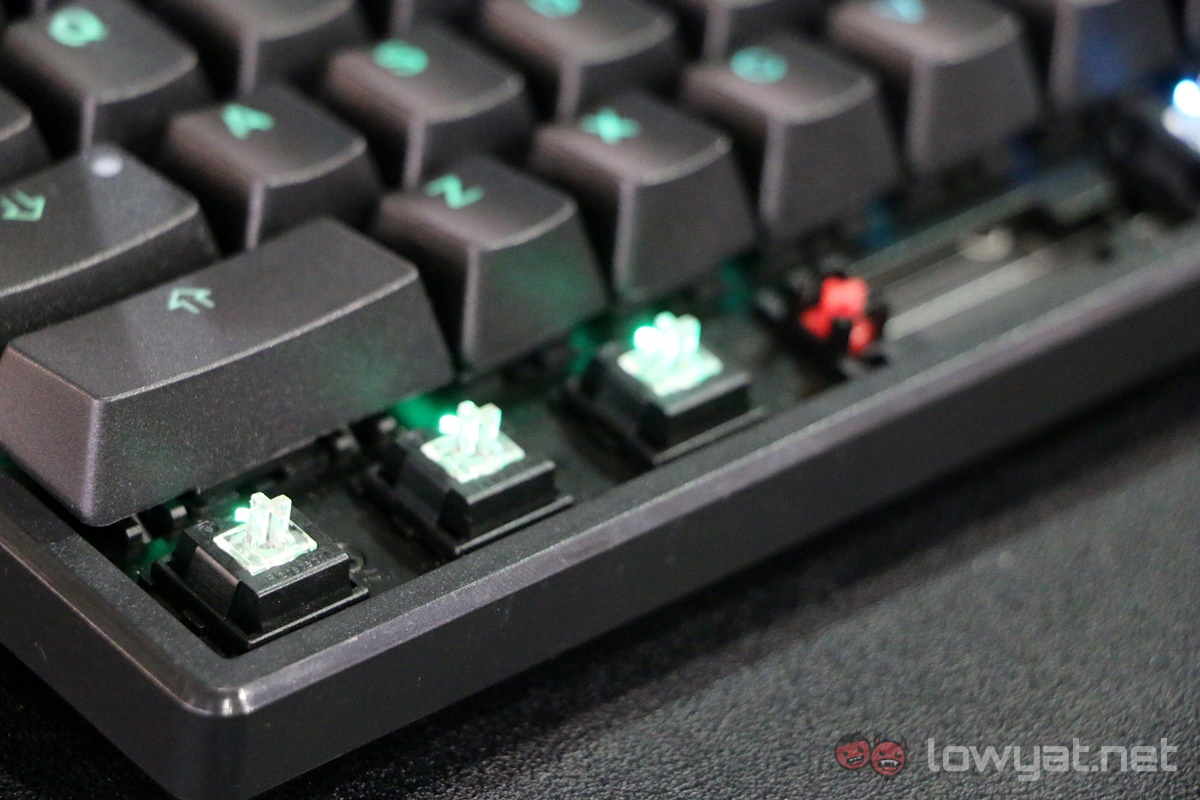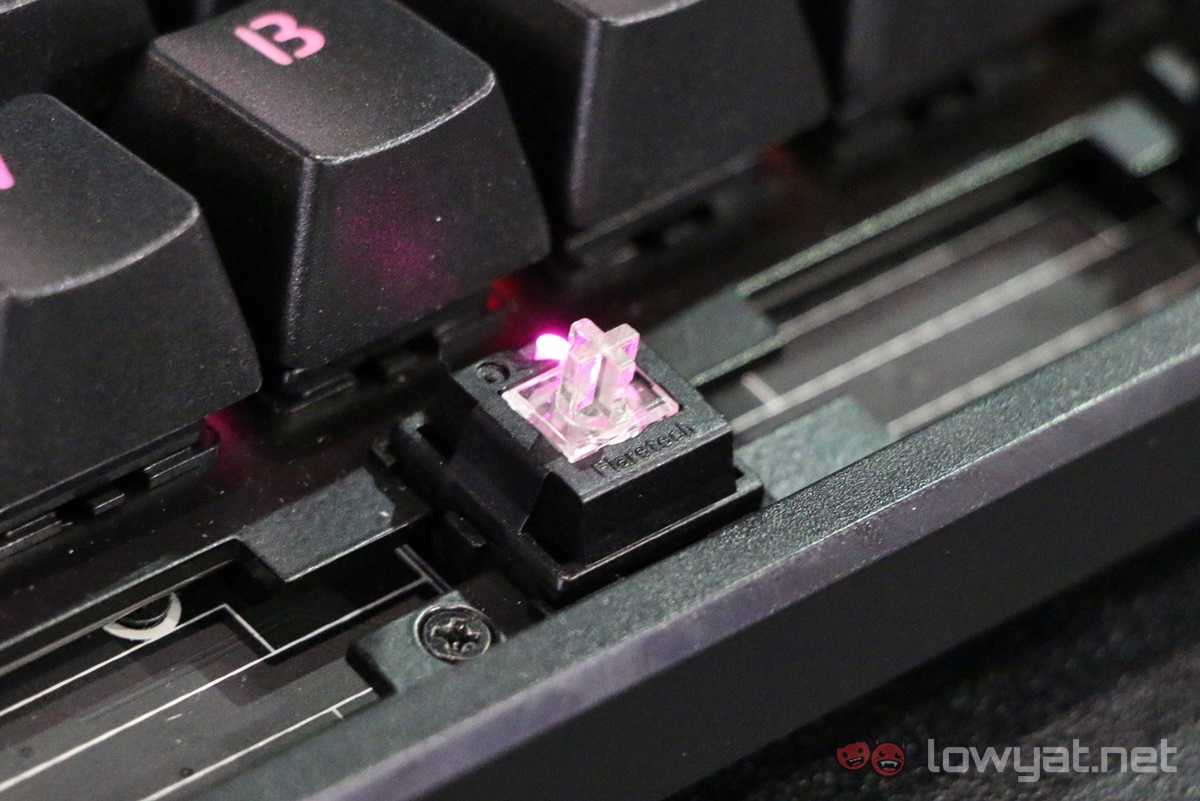Mechanical keyboard switches have largely retained the same design for decades, though it’s not for a lack of trying. At Computex 2016, two companies are demonstrating a new type of keyboard switch which sounds highly promising.
Tesoro and Ducky both are showing off an infrared light-based switches that may lie underneath mechanical keyboards of the future. The premise appears to be simple: a constant infrared light passes through two points within a switch, and when a key is pressed, the light flow is disrupted, thus actuating the key.
For Tesoro, the new switch (which the company is already manufacturing on its own for its future keyboards) presents several benefits compared to the current popular Cherry MX-style switches. Tesoro claims that because this switch, called Tesoro IR, does not require two metal plates making contact with each other, these switches should have better longevity (though the fact that each switch will require its own IR blaster leaves this argument rather weak).
The IR-based Tesoro switch can be built to be a water-resistant system, allowing for more variety in mechanical keyboards. The company already has a spill-resistant mechanical keyboard on display above a body of water, with Tesoro staff happily splashing water over its colourful backlit keys. In fact, while Tesoro has no intention yet to market this particular model, it will be happy to produce small batches to cyber cafes and other parties for commercial use.
In addition, Tesoro claims that this switch allows for even faster response times. The duration between the point of actuation from a keystroke and the keystroke actually actuating is said to be 0.1 miliseconds for this switch. Tesoro did not comment on what’s this figure like for a Cherry MX switch.
Perhaps the most interesting part of this switch is the fact that it is pressure-sensitive, opening up a huge opportunity for new ways to use a mechanical keyboard. Just like the inherent properties in the Topre electrostatic capacitive switch, the IR switch can determine how much pressure is placed on each keystroke.
For example, a soft keystroke will block less light compared to a hard one, which lets the keyboard “know” how much pressure is being exerted by measuring how much (or how little) light is passing through on each keystroke.
This has two potential benefits: first, like Topre, keyboard makers can create software that can customise individual keys to have different actuation points based on how heavy or how soft the user clicks a button, thus creating a fully customised keyboard that perfectly suits that one user.
On the other hand, a keyboard can be used in other ways, such as an analogue stick in games, where a racing game can have a car’s acceleration based on how hard the user presses a key.
But that’s something years down the line. As for the switches themselves, they resemble Cherry’s MX Blue switches in terms of feel. There’s a tactile bump and an audible click in each keystroke, which means it’s an easy transition if you’re currently using a Blue switch keyboard.
The same goes for Ducky’s version of the IR-based switch. Co-developed with Adomax since 2015, the switch – called Flaretech – follows largely the same principle as Tesoro’s IR switch.
Surprisingly, Ducky is not letting plenty of details out of the bag just yet – despite this technology being in development for over a year. It is also somewhat disappointing to hear that the company does not yet have plans to announce a Flaretech keyboard anytime soon, when Tesoro expects to unveil one this year, while another company Aftech’s Bloody gaming line already has an IR-based mechanical keyboard.
Follow us on Instagram, Facebook, Twitter or Telegram for more updates and breaking news.


